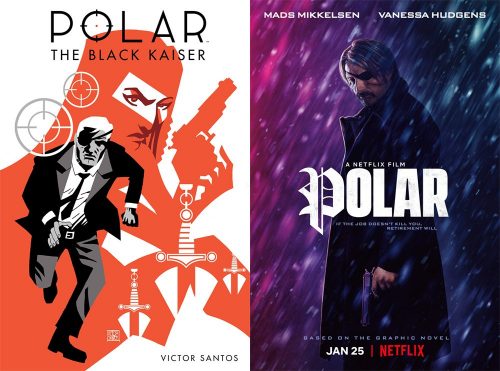
Victor Santos’ webcomic Polar is extremely minimalistic to the point where it lacks dialogue. But while the Dark Horse print adaption features a whole new script, I’d dare say that “silent” approach works to its advantage.
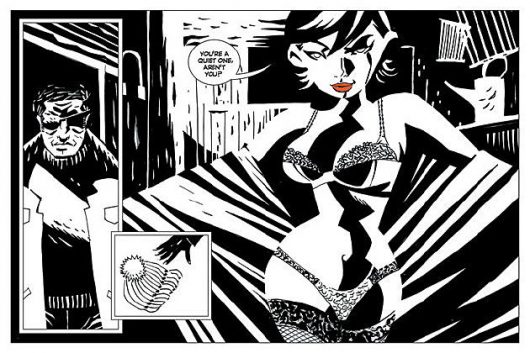
Santos cites artists like Frank Miller, Alex Toth, and Jim Steranko among some of its key influences, along with movies like 1967’s Point Blank. This was decided on by Stantos to help the comic appeal to both English and Spanish readers. The end result is a fascinating, dramatic and sophisticated noir book that holds a good deal of intrigue- not to mention some impressive artwork that tells an exciting tale.
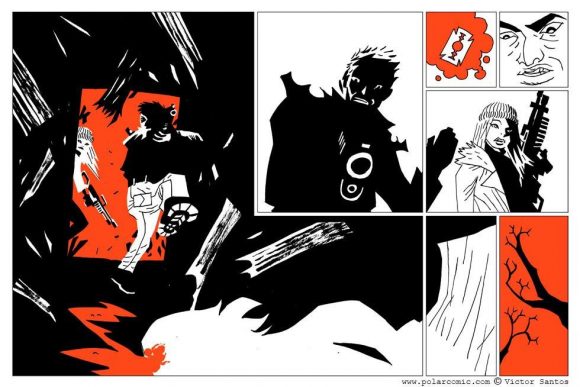
A feared hitman called the Black Kaiser is trying to enjoy his retirement when he’s suddenly ambushed by a group of assassins. After dispatching of his attackers in dramatic and brutal fashion, he lends the same treatment to numerous goons and would-be killers as he gets back into the game, alongside an unnamed femme fatale badass who’s equally as (if not more brutal) than Kaiser at points. Much of the story is improvised through gestures and expressions, but it remains compelling nonetheless.
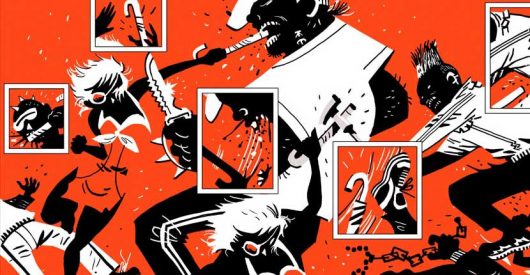
The term “Netflix adaption” has almost become something of a running joke at points, due to the many liberties they often indulge in from the original property. I’m not sure if the Netflix version of Polar is going to help counter that perception.
Because where Santos’ comic employs stark black-and-white visuals balanced with well-placed splashes of oranges, blues and reds, director Jonas Akerlund and photography director Par N. Ekberg trade that in for shades of violet blues and greys, outside of a few other key characters. And the differences don’t stop at the scenery, because it really feels as if the violence and narrative have been severely dumbed down now.

Mads Mikkelsen plays the Kaiser, known here also as Duncan Vizla, trying as hard as he can to channel the cool yet tormented lethality of Keanu Reeves’ John Wick. He works for Damocles, an organization that never hires anyone over the age of 50 and pays any employee a fat retirement package. But Damocles’ greedy leader Mr. Blut (Matt Lucas, hamming it up like crazy and looking like a Dick Tracy villain) wants to keep the money, plotting to kill Vizla to get those funds back.
His henchwoman Vivian (Katheryn Winnick, equally as Tracy-like) tries to set the Kaiser into a trap, but Vizla immediately sees through the ruse and decides to hunt his hunters- a motley crew of weirdos led by Fei Ren’s hitwoman Hilde, who execute another retired assassin (Johnny Knoxville, being his usual goofball self) to open the film.

When it comes to music videos, Akerlund is an absolute legend. From Prodigy’s “Smack My Bitch Up”, Madonna’s “Ray Of Light” and work for acts like Beyonce, Lady Gaga and Metallica, he knows how to create powerful scenes with a strong, styled use of color and lighting.
At times there are scenes in the adaption that are striking and atmospheric, but they’re diluted by how exploitive much of the gory shoot-outs and sexuality comes off. Various characters who at first seem like they could be interesting are either rushed through or massacred in ways that are trying far too hard to be edgy.
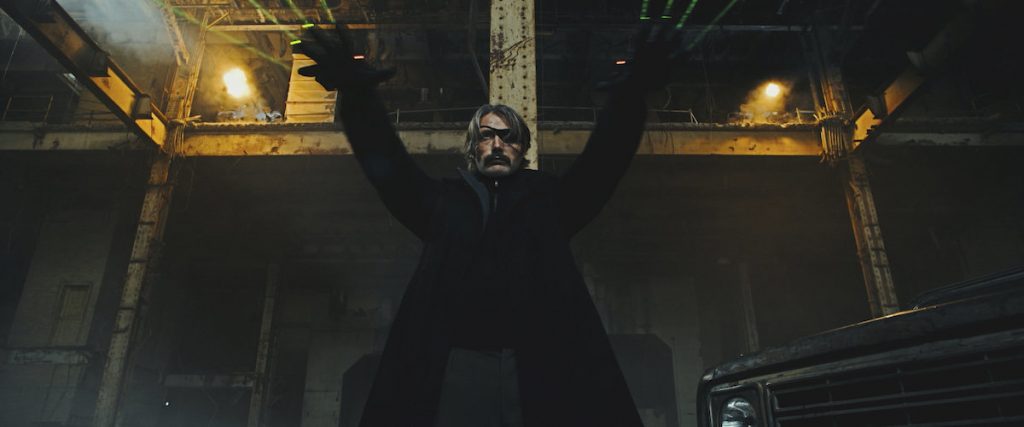
And Mikkelsen’s Kaiser isn’t given much to sink his teeth into to have a breakout performance. He looks uninterested in what’s going on around him half the time, lacking the fire in his eyes Reeves’ hitman possesses. Outside of some scenes with the lonely cabin woman Camille (Vanessa Hudgens, who next to Lucas’ Blut, probably has the best individual performance of the movie), it’s hard to feel much empathy for him because his character is such a gargoyle.
It didn’t feel to me like the Kaiser of the book, who just through some well-drawn facials from Victor Santos seemed like a more complex personality. (A quick note: if the first Wick movie gave you chills as a dog lover, Mr. Vizla is a far, far worse pet owner.) Oh, and Richard Dreyfuss has a quick cameo as a friend (or foe?) of Kaiser’s that’s kinda funny but too brief to amount to much.
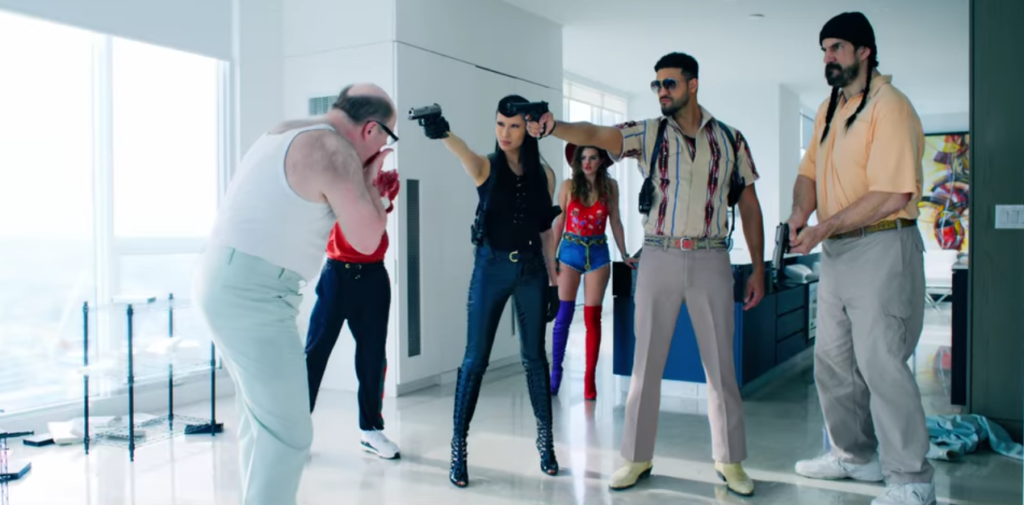
Now to be fair, both versions of the Black Kaiser story are deliberately bleak. And I’m not necessarily arguing that this film adaption should have lacked dialogue as the book did- I’m personally fine with a few creative changes between mediums for stories. Because when different people outside of the original author collaborate on a project, there’s going to be a few differences. A strict recreation of a comic can be good at times (see the anime adaption of JoJo’s Bizarre Adventure), but sometimes that can work to a movie or show’s disadvantage (the Watchmen movie).
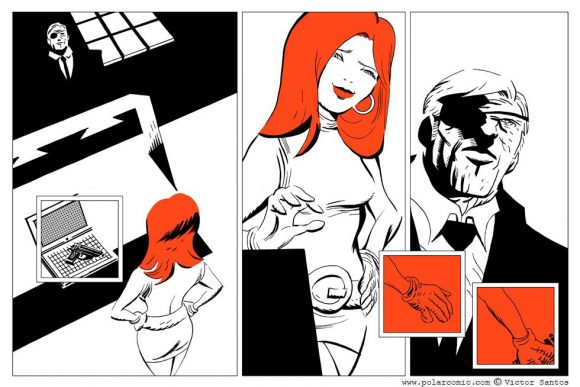
But outside of some admittedly impressive battles, like Vizla laser-targeting an army of bad guys (reminding me of EVIL from New Japan Pro Wrestling, never a bad thing), much of the execution of the violence and character development in the Polar movie feels flat. I, unfortunately, don’t feel Akerlund’s film accurately captures the nuances and pathos of Santos’ artwork.
In the movie’s case, the title Polar is apt because there’s little to no warmth in its take on the Black Kaiser’s story. The webcomic might not exactly be a barrel of chuckles, but the Netflix version is surprisingly humorless in its approach to the tale, and its shameless violence and sexuality comes off more shoehorned than sophisticated. It lacks the subtle touches and humanity that makes the John Wick series stand out, not to mention the artfulness of its action.
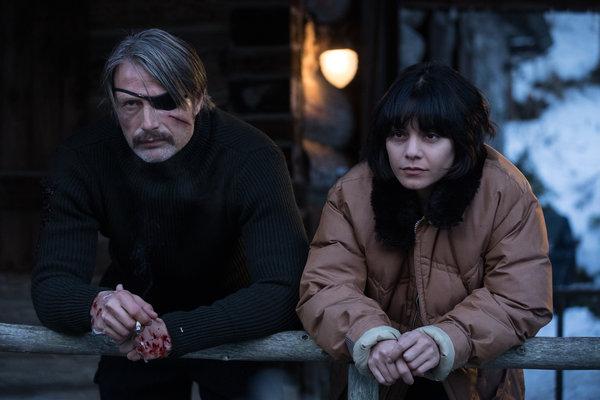
Overall, while I can happily recommend the Polar webcomic, I thought the movie sucked, and I’d advise you to steer clear unless you want to poke fun at it. Where one version of the Black Kaiser is at once shocking and mesmerizing, the other is a depressing slog that left me far more uncomfortable than thrilled much of the time.
The film wants to be sly about its graphic content and blood in the way Tarantino often does, but it takes itself too seriously to properly follow through on it. The book doesn’t have these problems because of the simplicity of Santos’ approach, and I’d say it received a Harvey Award nomination for good reason.
If you’d taken time out to see the film or flip through the Polar comics, let us know your opinions as always at @Official_FAN on Twitter!
